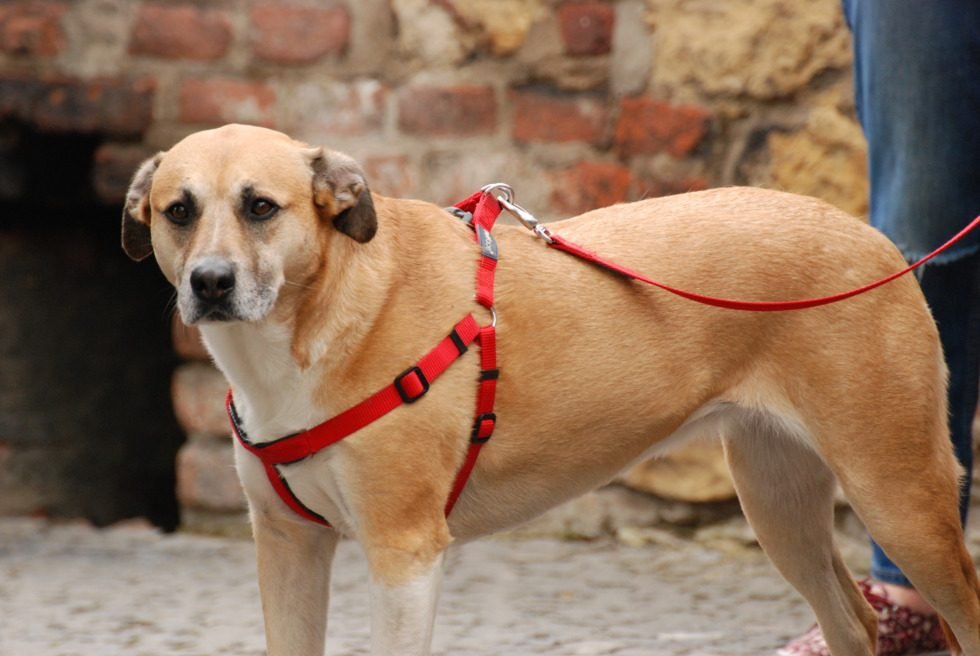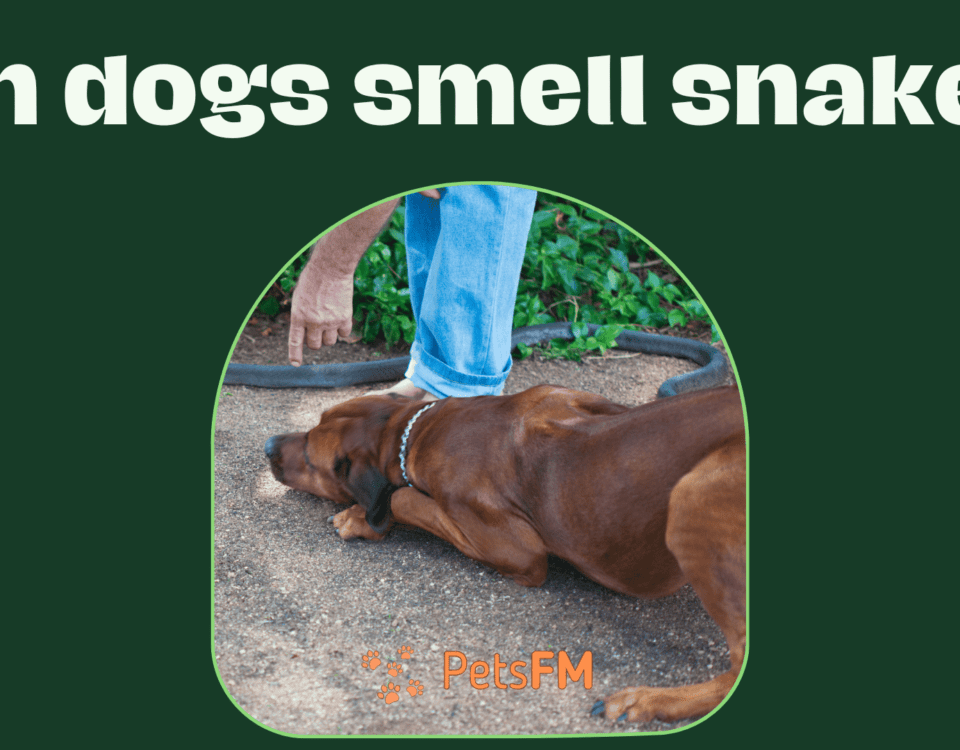


12 reasons behind brown spots on dogs belly that look like dirt
January 3, 2024


Milk coming out of puppy’s nose when nursing? 9+ Reasons
January 4, 2024It’s not unusual for dog owners to notice their pets walking with their heads lowered, which can cause concern.
To address this, pet owners can focus on fostering a more secure and confident environment for their dogs. Steps to assist your dog in overcoming this behavior include maintaining calm behavior, offering affection, and seeking advice from a professional.
Being attentive to your dog’s behavior and understanding the indicators of insecurity or submission is vital in supporting your four-legged friend.
But first, here’s a quick answer to why your dog is walking with its head down.
The reasons for a dog walking slowly with its head down are varied and cannot be generalized. This behavior could indicate various issues, such as insecurity or submissiveness, often observed in scared dogs or lacking self-assurance. This behavior can also be a symptom of physical discomfort, possibly due to pain or an injury.
Reasons Why Your Dog Is Walking With Its Head Down
Here are 17 primary reasons why your dog walks slower than its usual speed and with its head down.
1: Fear Of Something
Various factors, like a new person in the home, a visiting larger dog, or a toddler who tugs at your dog’s fur, can frighten your dog. If your dog walks with a lowered head, it might indicate it’s scared of something.
Reflecting on our first dog, he initially had an intense fear of vacuum cleaners. Now, he’s more of a helper during cleaning sessions! It’s amusing to recall how he used to rush to me, tail tucked and head low, whenever someone switched on a vacuum in another room.
It’s hard to predict what might spook your dog. So, you can try identifying what might be triggering the dogs.
2: Trying To Avoid Punishment
Dogs are pretty transparent with their emotions. We’ve all witnessed the vitality of a joyous dog, haven’t we?
Similarly, dogs have a reasonably good ability (though not flawless) to feel our emotions. They often pick up on whether we’re happy, sad, or angry. Anyone who’s returned home to find a guilty-looking dog who chewed up a favorite pair of shoes knows this well.


Likewise, dogs can sense when they might be criticized. If you’ve observed your dog acting submissive or trying to appear smaller after doing something wrong, it’s evident that dogs can anticipate a scolding.
Therefore, if your dog is walking with its head down, it might be an attempt to avoid eye contact and appear remorseful. This behavior could suggest that your dog has done something it knows it shouldn’t have and is trying to evade punishment.
3: Pain
Dogs are often resilient and can shrug off minor discomforts. For instance, I’ve frequently seen my dogs bump into sturdy objects and then look back at me as if nothing happened. However, there are certain levels of pain that even dogs can’t conceal.
If your dog walks cautiously with its head lowered or tilted, it might suffer from pain in its neck, back, legs, or feet, possibly due to a pinched nerve or a strained muscle.
It’s also important to remember not to jump to conclusions and assume the worst. While severe medical issues could lead to your dog walking this way, exploring other less alarming possibilities is worthwhile before becoming overly concerned.
4: Arthritis
Arthritis, like the previously mentioned neck and joint pain, is a severe condition that shouldn’t be taken lightly. The constant discomfort caused by arthritis can lead a dog to adopt an unusual walking style to alleviate the pain. In trying to relieve the stress on their aching joints, your dog might walk in a way that appears odd or even sorrowful.
5: Parasites
No matter how well your dog grooms itself, it’s still susceptible to attracting ticks, bugs, and other parasites. Excessive scratching can be a sign that something is irritating your dog.
If you notice your dog walking slowly with its head down, in addition to frequent scratching, parasites might be the issue. These pests can affect even the most energetic dogs, so it’s essential to investigate further.
6: Injured Or Sick
Like how you might slow down when feeling under the weather, your dog will likely exhibit similar behavior when ill. While humans have their own ways of moving more slowly when sick, dogs often walk with their heads down and at a slower pace.


Why Does My Dog Hang His Head Low?
If this is a new behavior for your dog and you can’t identify any other cause for this type of walking, you should visit the vet to ensure everything is alright.
7: Bumped Into Something
Dogs often move enthusiastically, occasionally leading to collisions with objects or brushing against obstacles they didn’t notice. Such incidents can be painful!
Think about a time when you’ve accidentally scraped your head or back – it’s an unpleasant experience. You probably quickly understood what you bumped into and how you misjudged your movement.
Dogs might not always have this kind of luxury. If they seriously hurt themselves, for example, by running into a picnic table bench, they may temporarily adopt a slower, more cautious way of walking.
8: Severe Illness
Although it’s a less common explanation, serious diseases can’t be ruled out as a cause for your dog strolling with its head down. While numerous other factors could lead to this behavior, it’s essential to consider all possibilities.
Conditions like cancer and organ failure can lead to significant changes in your pet’s behavior and physical state. A notable difference you might observe is your dog moving slowly with its head lowered, which could indicate a more serious underlying health issue.
9: Lack of Socialization
A dog unfamiliar with certain people or animals might feel unsure how to behave. This uncertainty can manifest as a lowered head, a sign of submission, and slow walking, indicating a desire to avoid conflict.
This behavior is often observed in rescue dogs who need more socialization. If you’ve recently adopted a dog, this could explain why they walk with their head down. Fortunately, this behavior can be modified with proper socialization, training, and patience.
10: Side Effects of Medication
Medications, while prescribed for beneficial reasons, can sometimes lead to unexpected side effects. Changing your dog’s walking behavior, such as moving slowly with its head down, could be a reaction to medication.
If your dog has recently begun a new drug and exhibits these symptoms, the medication could be the culprit. It’s advisable to discuss any behavioral changes with your veterinarian while your dog is on medication.
11: Reluctance to End Walks
Taking dogs for walks is usually a joyful experience filled with excitement and exploration. However, dogs aren’t always as enthusiastic about returning home.
Sometimes, they might seem to deliberately slow down, strolling with their heads down, especially when they realize the walk is nearing its end, such as when approaching the car.


If your dog behaves similarly, it might be their way of expressing a desire to prolong the outdoor adventure. Consider varying your routine – perhaps by extending the walk or engaging in more activities to expend your energy – to make the most of your time outdoors together.
12: Issues with Balancing
Your dog might be experiencing difficulties maintaining balance, which could be why its head is lowered. This issue might stem from an inner ear problem or something less serious.
If this is the cause of your dog’s slow walking and lowered head, it’s essential to monitor your pet closely and ensure the problem doesn’t continue.
13: Neurological Disease
If your dog moves slowly with its head lowered, it might indicate a neurological issue. Such diseases can lead to leg weakness and paralysis, making walking challenging for your dog.
Moreover, neurological conditions can exert pressure on the brain, potentially altering mood and behavior.
Here are some common neurological disorders in dogs:
- Canine Cognitive Dysfunction: Comparable to Alzheimer’s in humans, this affects your dog’s mental functions and behavior. Signs include confusion, sleep problems, anxiety, and altered social interactions.
- Epilepsy: A condition characterized by seizures, causing loss of consciousness and muscle spasms. Epilepsy can be hereditary or result from other causes like head injuries or liver conditions.
- Canine Degenerative Myelopathy: A progressive disease affecting the spinal cord, leading to weakness and paralysis in the back legs.
- Intervertebral Disc Disease: This occurs when the discs in your dog’s spine start breaking down, potentially causing pain, weakness, and paralysis.
14: Sensory Decline
As dogs age, they often experience declines in vision and hearing, leading to cautious behavior, including walking with their heads down. This lowered head posture helps them navigate their environment more safely as they adjust to their reduced sensory input.
Owners should accommodate their aging pets by simplifying home layouts and providing extra guidance and reassurance. Understanding and patience are crucial, as these changes are a natural part of a dog’s aging process. Is this conversation helpful so far?
15: Depression or Anxiety
Dogs, like humans, can suffer from depression or anxiety, which can manifest in various behaviors, including walking with a lowered head. Causes of such emotional distress in dogs may include significant changes in their environment, loss of a companion, or prolonged periods of isolation.


These emotional states can lead to a noticeable decrease in energy and enthusiasm, reflected in their slow, subdued walking style. It’s important for owners to recognize these signs and respond with extra attention, comfort, and, if necessary, the assistance of a veterinarian or an animal behaviorist. Providing a stable, loving environment and regular exercise can also help alleviate symptoms of depression and anxiety in dogs.
16: Dominance Issues in Multi-Dog Households
In households with multiple dogs, dominance dynamics can significantly influence individual behaviors. A common manifestation of this is when a less dominant dog walks with its head lowered, signaling submission to more dominant pack members. This submissive posture is a natural element of canine social hierarchy, where some dogs assert control while others acquiesce to maintain harmony.
Owners should observe these dynamics to ensure they remain non-aggressive and healthy. Establishing clear rules, giving equal attention, and conducting individual training can help manage dominance issues. If dominant behavior causes stress or aggression, consulting a professional dog trainer or behaviorist is advisable to restore balance and peace within the pack.
17: Side Effects of Aging
As dogs grow older, they naturally experience various age-related changes that can affect their physical and mental health. These changes often include a general slowing down, stiffness in joints, reduced mobility, and possibly a decline in cognitive function. Older dogs may walk with their heads lowered due to joint pain or muscle weakness, reflecting their decreased energy and agility.


Additionally, senior dogs might exhibit less enthusiasm in their daily activities. Owners need to recognize these signs of aging and adjust their care accordingly. This can involve providing comfortable bedding, modifying exercise routines, and possibly introducing supplements or medications as recommended by a veterinarian. Understanding and accommodating the side effects of aging are key to ensuring a senior dog’s comfort and quality of life.
Also, Read: 12 reasons behind brown spots on dogs belly that look like dirt
How to Address Your Dog’s Slow Walking with Head Down
There are many potential reasons why dogs might stroll with their heads down. The first step is to try and pinpoint the cause, which will guide your response.
1: Reconsider Discipline Methods
If you’re using physical punishment, this might be causing fear in your dog. While he may love you, he could be uncertain about what actions might lead to punishment. Living in fear is neither healthy nor enjoyable.
Stopping this approach is crucial if your dog seems afraid because he doesn’t know what might provoke a physical response. Consider consulting a professional dog trainer if you’re unsure about alternative training methods.
2: Infrequent Occurrence
If your dog has only walked this way once or twice, it’s probably not a cause for concern. Whatever prompted this behavior has likely resolved, and your dog has returned to his usual behavior.
3: Explore Acupuncture
Acupuncture might seem unconventional, but it can effectively alleviate pain and address other health issues in dogs. If you suspect your dog is in pain, consider visiting an animal acupuncturist.
It’s essential to seek a professional with experience in treating dogs and to get your veterinarian’s approval before proceeding with acupuncture.
4: Seek Veterinary Advice
If you’re concerned about your dog’s behavior or any other changes, consider getting a second opinion from a different veterinarian. This can alert you to potential health issues or reassure you that your dog is okay.
5: Increase Socialization and Exercise
Sometimes, a dog’s slow walking with a head down could be due to a lack of social interaction or insufficient exercise. Increasing playtime with other dogs, regular walks, and outdoor activities can improve their mood and energy levels. This can also help in building confidence, especially in shy or submissive dogs.


Playing with Dog – Exercise
6: Create a Calm and Secure Environment
Dogs can be sensitive to their environment. Ensuring that your home is a calm, safe space can help reduce anxiety or stress-induced behaviors. This includes minimizing loud noises, establishing a routine, and providing a comfortable resting area for your dog.
7: Dietary Adjustments
Consider evaluating your dog’s diet. Nutritional imbalances can affect a dog’s energy levels and overall health. Consulting with a vet about the best diet plan for your dog’s age, size, and health needs can make a significant difference.
8: Mental Stimulation
Dogs need mental stimulation just as much as physical exercise. Providing puzzle toys, learning new tricks, or engaging in interactive games can help keep their mind active and prevent boredom, sometimes leading to subdued behavior.
9: Gentle Massage and Physical Therapy
For older dogs or those with joint pain, gentle massage and physical therapy can be beneficial. These methods can help alleviate discomfort and improve mobility, encouraging more active and confident movement.
Must Read: Learn the Causes of Sagging Nipples in Dogs | Updated 2024
10: Behavioral Training
If the behavior stems from psychological factors like fear or anxiety, working with a dog behaviorist or trainer can be effective. They can offer strategies to build confidence and reduce fear-based behaviors in dogs.
11: Regular Health Check-Ups
Regular veterinary check-ups are important, especially as dogs age. Early detection of conditions like arthritis, sensory decline, or other health issues can allow for timely treatment and management.
12: Provide Adequate Rest
Ensuring your dog gets enough rest is also crucial. Overexertion can lead to fatigue, leading to a head-down posture. A balance between activity and rest is key to maintaining your dog’s health and happiness.
13: Comfort Items
Some dogs may find comfort in specific items like a favorite toy or blanket. Providing these items can offer a sense of security and comfort, especially in times of change or stress.


Addressing your dog’s slow walking with its head down involves a holistic approach, considering both physical and emotional well-being. Observing your dog closely and understanding its unique needs will guide you in providing the best care and support.
Editor’s Pick: Do’s and Don’ts of Scruffing Your Dog: A Comprehensive Guide
Final Thoughts
In conclusion, a dog walking slowly with its head down can signify various issues, from pain and fear to poor socialization. Understanding the cause is critical, and solutions range from medical interventions like acupuncture to behavioral approaches and professional training. Observing and responding appropriately ensures your dog’s well-being and happiness.
![Dog Walking Slowly With Head Down? [Reasons & How To Address]](https://petsfm.com/wp-content/uploads/2024/01/Dog-Walking-Slowly-With-Head-Down-Reasons-How-To-Address-630x630.jpg)


